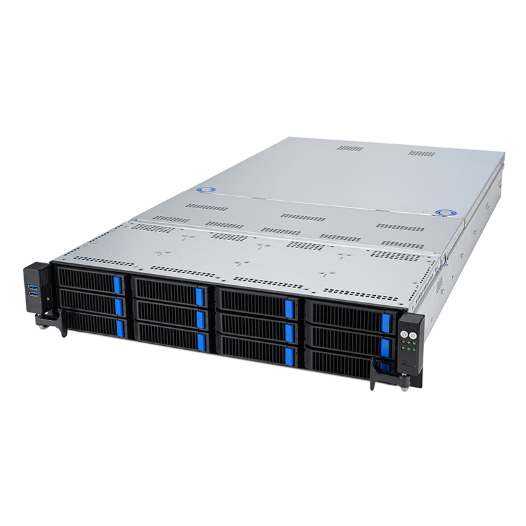Why Do Data Centers Love “Flat Boxes”? Unveiling the Past and Present of Rack Servers
Step into any modern data center, and you'll be struck by the sight before you: rows upon rows of neatly arranged silver-gray “flat boxes,” fitting together like Lego bricks on massive racks. Blue LED indicators pulse rhythmically, forming a steel jungle of the digital age.
These “flat boxes” are the unsung heroes powering our digital lives—rack servers. You may never have seen one in person, yet behind every video you stream, every order you place, and every game you play, they likely work silently in the background.
So why do data centers worldwide favor this “flat box” design? Let's unravel the past and present of rack servers and uncover the secret to their dominance in data centers.

Past: From “Tower Giants” to “Rack Rising Stars”
In the early days of the internet, most enterprise servers were tower servers. They resembled the desktop computers we use daily, only much larger. These servers offered strong independence and simple deployment—just plug them in and they're ready to go.
But as the internet wave surged, corporate IT demands exploded. The drawbacks of tower servers became increasingly apparent:
Space Black Holes: Bulky tower units devoured precious data center floor space.
Management Nightmares: Hundreds or thousands of standalone servers created tangled cabling, making maintenance and troubleshooting like searching for a needle in a haystack.
Resource Waste: Each server operates as an information silo, preventing efficient resource sharing and allocation.
Data center managers urgently needed a more efficient, consolidated solution. Thus, the “flat box”—the rack server—emerged.
Present: The “Flat Box” Winning Formula—Standardization, Density, and Efficiency
The design philosophy of rack servers boils down to two words: efficiency. It transforms “computing” from a loose resource into a scalable, standardized “commodity” that can be delivered at scale.
1. Form Factor Evolution: Born for the Rack
The “rack” is the standard shelving unit in data centers, with a fixed width of 19 inches and height measured in “U” units (1U = 1.75 inches). Rack servers are inherently designed to fit this standard. Their “flat box” form factor allows them to slide horizontally into the rack and secure with screws. Common specifications include 1U, 2U, 4U, etc. The smaller the number, the “thinner” the chassis, enabling more servers to be deployed within limited space.
2. Space Magic: Exceptionally High Deployment Density
This is the most obvious advantage of the “flat box” design. A standard 42U rack can easily accommodate dozens of 1U servers, delivering hundreds of CPU cores and terabytes of memory—unthinkable in the tower server era. High density means greater computing power within the same footprint, directly reducing data center land and construction costs.
3. Operations Revolution: Managing Servers Like Bookshelves
All “flat boxes” are installed facing the same direction, allowing power and network cables to be uniformly routed from the front or rear of the rack for a clean, organized layout. When a server fails, maintenance personnel can slide it out of the rack, replace it, and slide it back in—much like pulling a book from a shelf—in just minutes, enabling efficient hot-swap maintenance. This modular design significantly enhances data center maintainability and scalability.
4. Resource Centralization: Empowering Cloud Computing and Virtualization
The proliferation of rack servers paved the way for two pivotal technologies: virtualization and cloud computing. Thousands of standardized “flat boxes” interconnected via networks form a massive computing resource pool. Cloud service providers can dynamically allocate computing power from this pool to users on demand, enabling elastic resource distribution and maximum utilization. Without the standardization of rack servers, today's thriving cloud industry would not exist.
Future: Flatter, Greener, Smarter
Technological progress never stops, and the “flat box” itself continues to evolve:
Diversified Computing: Beyond traditional CPU servers, GPU servers for AI computing and storage-focused servers are emerging within rack standards to handle diverse workloads.
Green Energy Efficiency: As chip power consumption rises, thermal management becomes paramount. Liquid cooling technology is increasingly integrated into rack servers, directly dissipating heat through liquids—achieving far higher energy efficiency than traditional air cooling.
Deep Intelligence: Servers now incorporate smarter management chips that monitor hardware health in real time, predict failures, and automatically adjust power consumption, enabling unattended intelligent operations.
From bulky “tower giants” to efficient “flat boxes,” the evolution of rack servers mirrors the efficiency evolution of the digital economy. Though unassuming in appearance, it is these billions of “flat boxes” that form the bedrock of the information age—silently supporting our present while computing our smarter, more interconnected future.
So the next time you enjoy instant messaging, seamless streaming, or any smart application, remember: somewhere in a data center, countless “flat boxes” are humming away on neatly arranged racks, working just for you.



